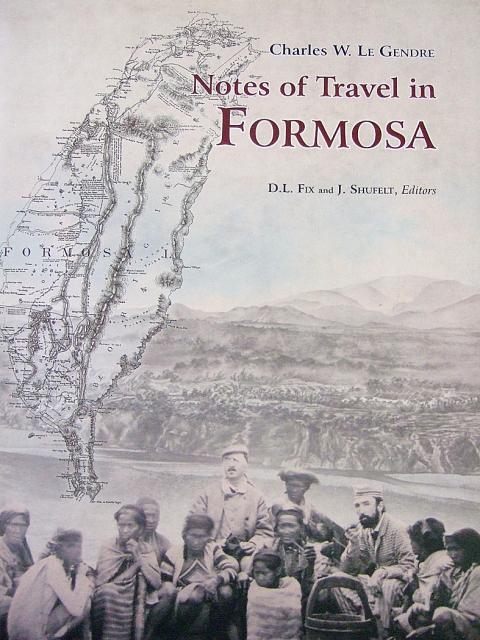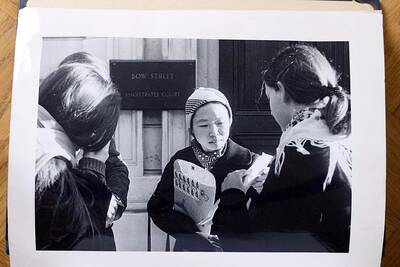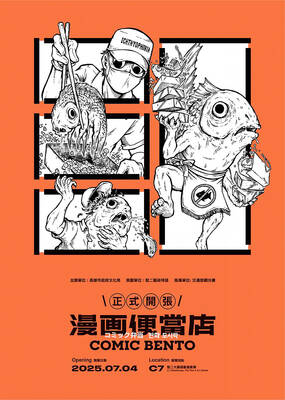As the effects of the Industrial Revolution made their way around the world, inevitable change followed. In Asia, the Qing Empire, reeling from the Opium and Arrow Wars and the Taiping Rebellion, found itself forced to open more and more treaty ports to survive. Japan, also forced to open treaty ports, responded with its Meiji Restoration (1868) and an eye for expansion. Thus Taiwan with four Qing treaty ports on its western shore and Japan to the north could not avoid the ensuing cauldron of trade, commerce and “progress.” Into this developing mix came Charles W. Le Gendre, a US Civil War General.
Unlike the fictitious “lost” Captain Nathan Algren, played by Tom Cruise in the film The Last Samurai, Le Gendre came to Asia with more definite career opportunities in mind. He began as American Consul in Amoy (Xiamen) from 1866 to 1872. Notes of Travel in Formosa, a massive, four volume opus containing 29 chapters and edited by Douglas L. Fix and John Shufelt, is about those years and provides a much needed insight into the author and the larger mosaic of Taiwan history being shaped at that period.
As Consul in Amoy, Taiwan fell under Le Gendre’s jurisdiction, and two pivotal shipwrecks, the American Rover (1867) and a Ryukyuan ship (the Peony Tribe/Mudan Incident, 1871), happened off the island during his watch. The massacre of the surviving crews of those wrecks called for a diplomatic but satisfactory resolution as well as the prevention of future killings. Le Gendre’s success in handling these two, particularly the latter, would lead to his next position, advisor to the Meiji government (1872 to 1875). There he would complete his Notes.

Le Gendre is a man whose wide, colorful and varied life calls for at least one good, comprehensive biography but that is not the task here. Fix and Shufelt have wisely chosen to focus their efforts to presenting his monumental work. To it they add comprehensive annotations and commentary of their own, including an examination of the work’s formative completion in Japan. Thus this work, previously only available in the US Library of Congress, is now available to a wider audience.
Between the years 1867 and 1872, Le Gendre as Consul, would make at least eight trips to Taiwan, far more than the obligatory once every three years visit by the Chinese Viceroy dwelling at Foochow (Fuzhou). His visits frequently included meetings with Tauketok, chief of the 18 tribes in the south where the shipwrecks took place and with whom he achieved a workable treaty. Notes, however, does not follow those eight trips in strict chronological order. Instead Le Gendre chooses to present a composite picture of the island as seen from north to south. In the Textual Introduction, Shufelt suggests that Le Gendre’s aim was to show his comprehensive knowledge of the island should an expansionist Japan choose to occupy it and seek an administrator. It would not happen at that time.
For this reason, eschewing the travelogue style popular at that time, Le Gendre presents his travels with a more “encyclopedic” format including his geological, indigenous languages and resource comments. Because of this, the average reader may find some sections less appealing; not all encyclopedic entries meet everyman’s tastes. Nonetheless, by including Le Gendre’s detailed descriptions, Fix and Shufelt make sure that we get a full picture of the man and all his insights and observations on Taiwan.
Notes further includes some 170 photographs, and a series of illustrative paintings by the Japanese artist, Kobayshi Eitaku (1843—1890) all commissioned and collected by Le Gendre, as well as maps that he composed. The maps would be extremely helpful in the upcoming Japanese Mudan punitive expedition (1874), which Le Gendre helped plan. Fix further adds an almost day-by-day itinerary of Le Gendre’s eight trips and Huang Chi-wei (黃智偉) provides a “placename” reference map.
In Notes we see a Le Gendre who is a capable and pragmatic player that lives and functions where the proverbial rubber meets the road. There is little “gushy” admiration of “5000 years” of Chinese culture that some travelogue writers might present. Instead Le Gendre includes realistic and sometimes harsh observations. Piracy is a constant threat to local trade. A sharp distinction is made between the Chinese portion of the island and the indigenous controlled territories that are “outside the jurisdiction of the Emperor.”
Warfare is a constant threat between the ethnic groups and in many areas weapons are carried wherever one goes. The rules and laws of the Qing government serve as a “pretext for exacting money from the people” with officials “purchasing” posts anywhere from “$50 to $200,000.” In turn they subsequently “extort” money from the subject people to reimburse themselves. The industrious Hakka live nearest to the indigenous tribes intermarrying and often serving as middlemen to the benefit of both but they also can be “cunning” and “perfidious.” The indigenous (generally described in a favorable manner) are not united and would have to be “subdued” or worse. Most telling of all is Chapter 24, titled Has Japan the Right to Assume Suzerainty over Aboriginal Formosa?
The National Museum of Taiwan History (Tainan), the editors, and all involved (reference the three page list of acknowledgments) have done yeoman service in “freeing” Notes from the US Library of Congress. And given the enormous effort put into this work, one hesitates to indicate omissions and suggestions, but a review is not complete without such.
These range from minutia such as Huang Chi-wei’s placename map omitting the frequently mentioned Taiwanfoo; Appendix One strangely lists a focus on 1850 to 1875 but includes people of a much earlier era yet omits the central Tauketok. An opportunity to visually contrast and reveal Le Gendre’s choice of a topical format is missed by not taking Fix’s painstaking chronology of the eight visits and separately tracing them place by place on Huang Chi-wei’s map. Similarly a simple chronological timeline of related pertinent developing realities could avoid the “isolationist tag” of most research and integrate it with Le Gendre’s intriguing future casting of his lot with Japan and Korea and the eventual 1895 acquisition of Taiwan by Japan. Such trivia aside, Notes of Travel in Formosa is an essential work for anyone interested in treaty port era Taiwan to read if not make part of one’s personal library.

From the last quarter of 2001, research shows that real housing prices nearly tripled (before a 2012 law to enforce housing price registration, researchers tracked a few large real estate firms to estimate housing price behavior). Incomes have not kept pace, though this has not yet led to defaults. Instead, an increasing chunk of household income goes to mortgage payments. This suggests that even if incomes grow, the mortgage squeeze will still make voters feel like their paychecks won’t stretch to cover expenses. The housing price rises in the last two decades are now driving higher rents. The rental market

Fifty-five years ago, a .25-caliber Beretta fired in the revolving door of New York’s Plaza Hotel set Taiwan on an unexpected path to democracy. As Chinese military incursions intensify today, a new documentary, When the Spring Rain Falls (春雨424), revisits that 1970 assassination attempt on then-vice premier Chiang Ching-kuo (蔣經國). Director Sylvia Feng (馮賢賢) raises the question Taiwan faces under existential threat: “How do we safeguard our fragile democracy and precious freedom?” ASSASSINATION After its retreat to Taiwan in 1949, the Chinese Nationalist Party (KMT) regime under Chiang Kai-shek (蔣介石) imposed a ruthless military rule, crushing democratic aspirations and kidnapping dissidents from

It looks like a restaurant — but it’s food for the mind. Kaohsiung’s Pier-2 Art Center is currently hosting Comic Bento (漫畫便當店), an immersive and quirky exhibition that spotlights Taiwanese comic and animation artists. The entire show is designed like a playful bento shop, where books, plushies and installations are laid out like food offerings — with a much deeper cultural bite. Visitors first enter what looks like a self-service restaurant. Comics, toys and merchandise are displayed buffet-style in trays typically used for lunch servings. Posters on the walls present each comic as a nutritional label for the stories and an ingredient

Fundamentally, this Saturday’s recall vote on 24 Chinese Nationalist Party (KMT) lawmakers is a democratic battle of wills between hardcore supporters of Taiwan sovereignty and the KMT incumbents’ core supporters. The recall campaigners have a key asset: clarity of purpose. Stripped to the core, their mission is to defend Taiwan’s sovereignty and democracy from the Chinese Communist Party (CCP). They understand a basic truth, the CCP is — in their own words — at war with Taiwan and Western democracies. Their “unrestricted warfare” campaign to undermine and destroy Taiwan from within is explicit, while simultaneously conducting rehearsals almost daily for invasion,